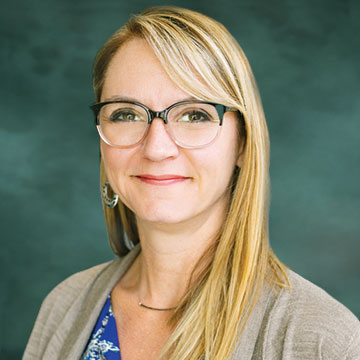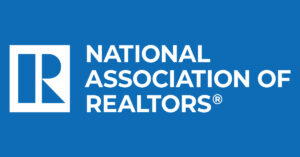An economic downturn usually signals a decrease in mortgage lending with fewer people willing to take on new debt due to financial hardship and uncertainty. The economic downturn that resulted from the COVID-19 pandemic, however, has been unique in that it has actually caused a spike in borrower demand.
With interest rates near all-time lows, a limited supply of homes on the market and many people looking for more space to work from home, record numbers of consumers are looking for new mortgages. In fact, many homebuyers may not have been hurt economically by the pandemic at all.
But increased demand — and the rising costs to originate loans — are putting lenders under significant pressure to stay ahead and efficiently handle the high volume of mortgage originations nationwide. Competition is heating up as originator and lender agility is tested.
The mortgage companies that are the fastest and most efficient are ultimately the ones that win out. But efficiency isn’t everything. Accurate risk assessment also becomes more important than ever in this era of economic uncertainty and increasing regulatory scrutiny.
So, what do lenders and the originators who work with them need to do to succeed in this market? For many, the answer includes shifting to an all-digital or digital-first process. A move to a digital mortgage verification system hones a lender’s competitive edge, increases scalability and improves the ability to meet client expectations while driving retention rates for those wanting a faster and easier process.
Hiring dilemma
With rates at historic lows that borrowers know won’t last forever, aggressive lenders are going digital first or digitizing quickly, leaving other, less agile competitors trying to staff up to meet demand. Mortgage broker hiring rates are the highest they’ve been in at least a decade, topping 100,000 late last year.
But if these nondigital (or less digital) lenders are struggling to meet current demand by staffing up with more loan officers and underwriters, they will face even larger issues when the market inevitably contracts. Automated digital processes enhance speed, reduce costs and improve quality to maximize an originator’s or underwriter’s time while reducing the need to increase staff. They create elasticity within an organization, providing better adaptability to market swings.
According to Freddie Mac, the time it takes to close a mortgage is roughly 45 days, while the Mortgage Bankers Association reported that the average per-loan production cost was $7,452 as of third-quarter 2020. Since digital verifications can shave eight to 12 days off the origination-to-closing process (thus saving about $166 per day), this can amount to thousands of dollars in cost savings for lenders while also increasing accuracy.
Simplified process
Making the shift to digital isn’t just an economic imperative for mortgage lenders; it’s also about enhancing the consumer experience. While the manual verification process can be tedious, time-consuming and stressful for borrowers, digital verifications simplify the mortgage process across the board for today’s consumer.
Consumers are telling the industry that they want a more simplified, digital process. A 2020 McKinsey & Co. survey shows that 75% of people who used a digital channel for the first time during the pandemic plan to continue using them when the health crisis subsides.
A 2020 J.D. Power study also revealed that servicer issues — loan processing times, ease of self-service interaction and helpfulness of customer service — are weighing down consumer satisfaction scores. Lenders need to capitalize on this consumer need. Reducing friction for the borrower and improving their experience ultimately benefits the lender through increased client satisfaction and retention.
Real-time insights
Open banking — which allows third-party financial services to access consumer banking transactions — will shape the future of digital verifications, enabling lenders and originators to streamline processes, more accurately assess risk and verify borrower details. This will provide the simple, easy mortgage origination experience that today’s consumers are seeking.
Consumers can permit mortgage companies to access their financial data quickly and easily. Assets, income and employment can then be verified by lenders in a single interaction that takes seconds or minutes rather than the days or weeks for cumbersome paper-based verification methods. This consumer-permissioned data enables lenders to handle different lending scenarios. Consumer-permissioned data also can reduce borrower anxiety as they wait to find out whether they qualify for the loan amount for the home they love.
Performing mortgage verifications through open banking leverages high-value data directly from financial institutions and payroll processors to provide accurate, real-time insights into a borrower’s current assets, income and employment. Plus, Freddie Mac and Fannie Mae are allowing data obtained through open banking to be used in manual loan documentation.
● ● ●
The mortgage industry’s ultimate goals should be to help mitigate risk for lenders, create an improved consumer experience and increase overall financial inclusion by helping borrowers better prove their creditworthiness. All of this can be achieved through the emerging open-banking platform and the enhanced, consumer-centric digital mortgage process. ●
Author
-

Lisa Kimball is senior vice president of product and strategic programs for Finicity, a Mastercard company. In this role, Kimball works with clients, partners and industry innovators to advance the use of creative thought around consumer-permissioned financial data through Finicity’s open-banking platform. Kimball and her team are consistently improving Finicity’s current product suite while also creating next-generation client experiences to streamline lending processes, expand credit access and improve consumer financial awareness.





